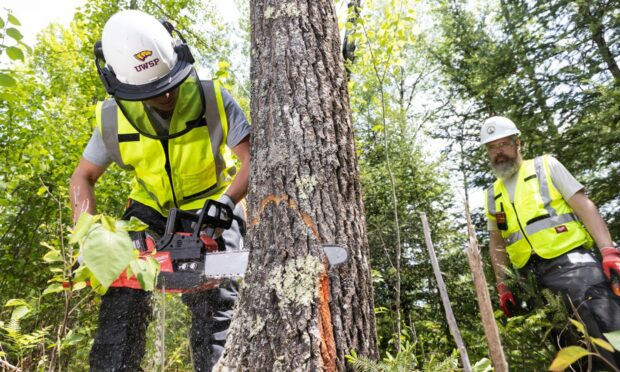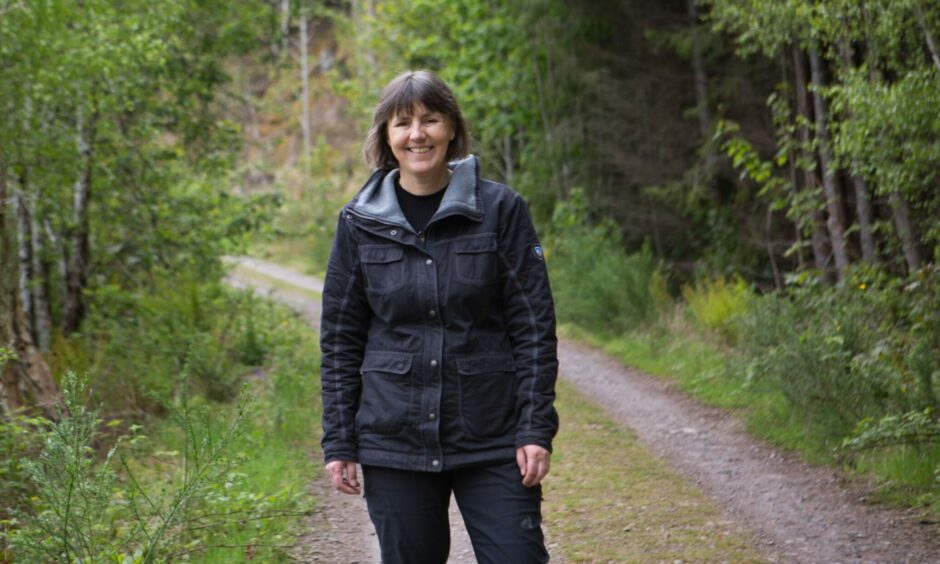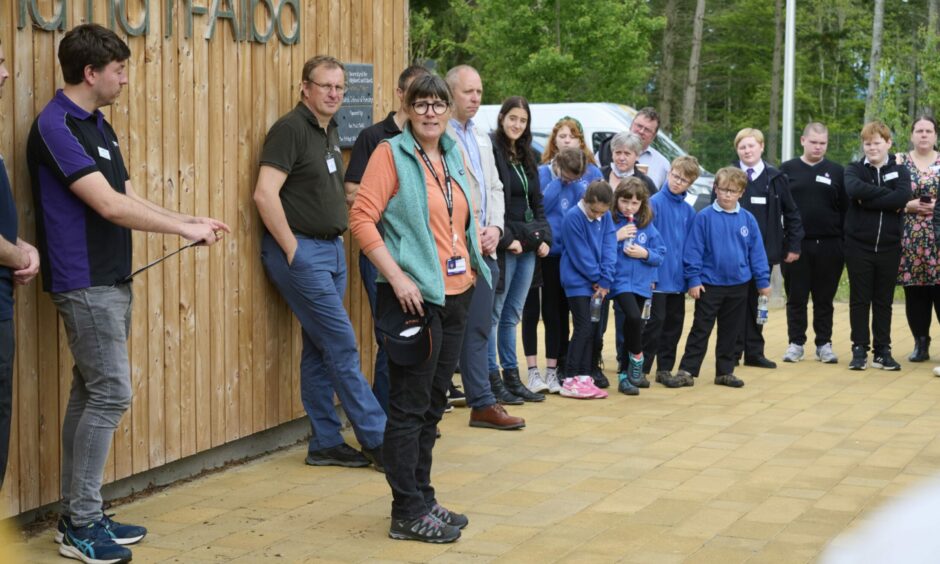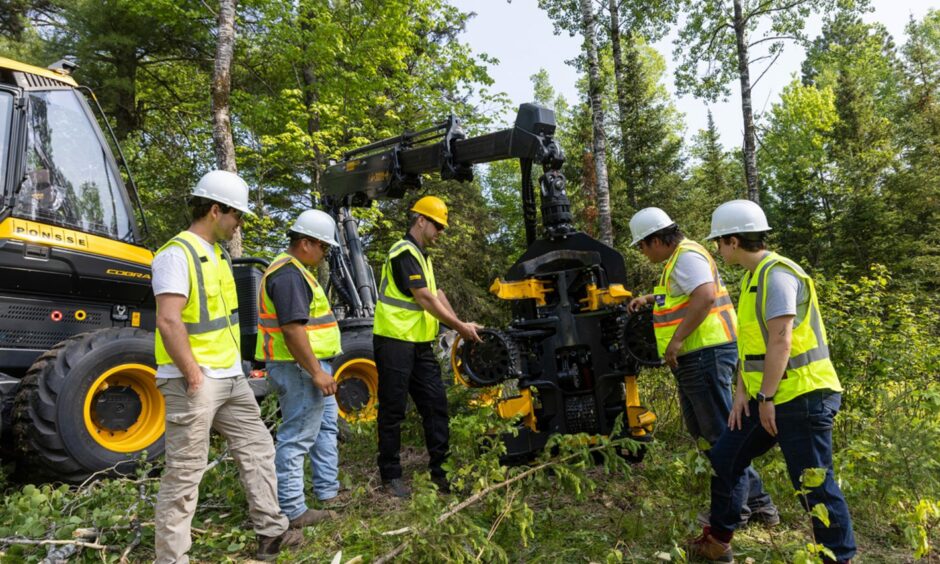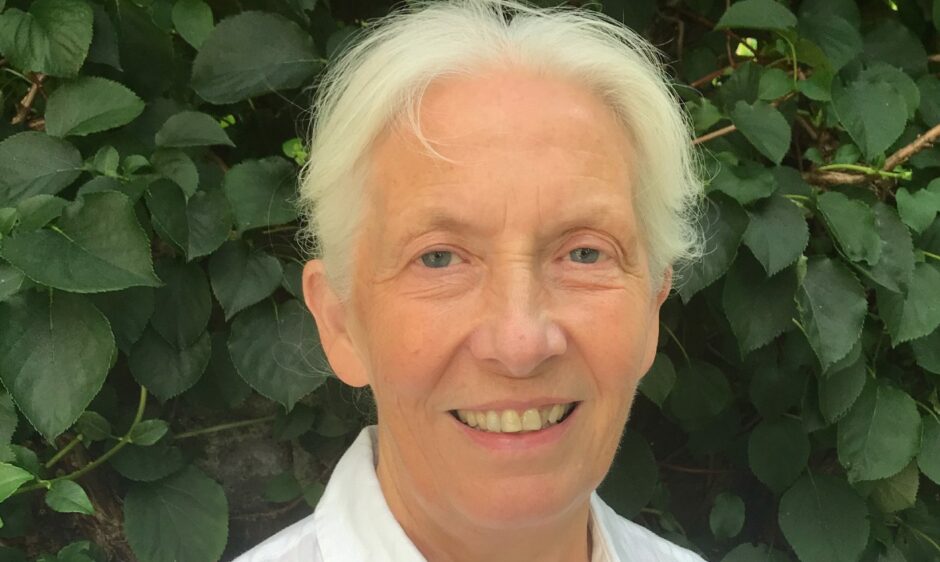Scotland could take lessons from America and teach students about forestry to help tackle a national workforce shortage.
There are concerns about a drop in recruits as the workload increases, posing a risk to the sector’s contribution to climate change targets.
The Scottish School of Forestry in Inverness has paused its full-time BSc degree course due to very low applications.
Students are also being lured into jobs before they finish their courses such is the demand for workers.
Now it is being suggested a pilot scheme in the Highlands, linking schools to forests, could help attract more young people into the industry.
Who is suggesting the pilot scheme?
Amanda Bryan, former head of the school of forestry, will next April visit Michigan and Wisconsin where projects have embedded forestry education across the school curriculum.
Work in Wisconsin in particular has helped grow and sustain the forestry and logging industry.
It is the biggest employer in 10 counties, and is in the top 10 in 31 counties.
More than 27,000 acres of forest land has been registered for 255 schools in the state.
While traditional educational pathways have not been meeting workforce demand recently, an $8 million (£6.2 million) grant is supporting teaching to create a forestry careers pipeline.
Ms Bryan aims to trial initiatives in Scotland to make youngsters aware of career opportunities.
She says more people are needed with targets for tree planting increasing significantly.
At the same time, trees planted in the 1980s have to be harvested and land re-stocked.
Growing numbers of workers are also retiring and there are not enough younger replacements.
“What we are finding is that the number of students is not going up.
“That is a real challenge for the sector. For whatever reason, young people in particular are not seeing forestry as a career option.”
Could an American-style scheme work in the Highlands?
Ms Bryan’s research in America, via a Churchill Fellowship, will look at curriculum models based on agriculture and forestry.
“It means young people are informed about the natural environment and what the opportunities are from a very early stage.
“We don’t have a similar approach in Scotland.
“In Wisconsin in particular, hundreds of schools have their own forests as a resource for teaching.
“A pilot here would be a good thing to look at for a long-term sustainable workforce for the sector, given the work is only going to increase.”
She said the pilot could be based in the Highlands or Moray, perhaps linked to a community-owned woodland.
young people in particular are not seeing forestry as being a career option.
Amanda Bryan
Ms Bryan is now a part-time lecturer at the school, part of the University of the Highlands and Islands, and executive director of the Scottish Forestry Trust. She said forestry jobs may be perceived as being low-skilled and outside in all weathers.
“The reality is that some jobs are outside, but a significant percentage are in forest and woodland management and increasingly involve high-tech roles.”
Summit to address failure to meet woodland targets
The workforce challenge comes as Scotland is failing to meet growing woodland creation targets.
It created just 8,190 hectares (20,238 acres) of new woodland in 2022-23 from a target of 15,000 ha (37,000 acres).
This will rise in 2023-24 to 16,500 ha (40,700 acres) and to 18,000 ha (44,480 acres) by 2024-25.
A forestry summit this summer will aim to restore planting levels.
Ms Bryan added: “We can’t afford to have that slippage if we are serious about forestry contributing what it can to net zero targets.
“We need to make sure we have the workforce to deliver it.
“It’s my belief we need to get better engagement from the education sector.
“That’s why I’m going to Wisconsin and Michigan to look at somewhere it seems to be working more effectively.”
The shortage of workers with training at further education level is estimated to be 1,200, rising to 2,600 by 2027.
An additional 68 forestry graduates are needed by next year to cope with woodland creation targets.
Forty graduates are then needed each year to maintain that increase. In addition, 178 are required annually to sustainably manage the existing woodland.
Scottish Forestry has increased its workforce by 20% to meet the increased demand for planting.
It is also spending £1 million on training frontline staff over the next two years.
In addition, Forestry and Land Scotland has recruited 19 apprentices in the last two years. Seven more will start in August and another 16 in January.
Struggling to reach secondary pupils
A range of initiatives is helping engage younger children with the environment.
These include Scotland’s Finest Woodland Award, the Scottish Junior Forester Award, Outdoor and Woodland Learning and the Forest Kindergarten Award
Chief forester for Scotland Dr Helen McKay says there is relatively good provision for younger children.
“Where we really struggle is with older secondary school children, especially S4-6.”
Because demand in the sector is so high, the industry is offering good jobs to people before they have completed their courses.
Dr Helen McKay
She points to schemes like those run by the Scottish Council for Development and Industry, which now includes timber, and Forestopia as a “step in the right direction”.
“The main challenge is still to access these senior pupils and make them aware there are fantastic careers in the forestry sector.”
Dr McKay says forestry jobs ads attract “huge” numbers of applicants, but many don’t have the core forestry skills.
She is also concerned about the regular number of applications for further and higher education courses.
“We think there are hundreds of people needed at degree level, yet the application numbers are in are in the region of 30-50. So there is a really tricky problem at the moment.
Struggle to retain students
Because of the high demand, students are leaving courses to take up jobs in the industry.
“It’s an irony that, because the sector is so vibrant and recruitment of skilled workers is so high, students are being attracted out of their courses before they finish them.”
Dr McKay says Amanda Bryan’s research could help in the longer term.
“I’m looking forward to her findings and to consider if they could be implemented in Scotland; if a pilot would be worth trying and what measures we might want to consider as part of that pilot.”
The Scottish School of Forestry says while the full-time BSc course was halted, the number of part-time higher education students increased.
Applications for further education courses are also up.
Carrie Higgins, tertiary education leader at UHI Inverness, said: “We have paused the full-time option due to very low applications, but we are continuing to offer our BSc part-time.
“The industry is facing a skills shortage, and, after HND level, we struggle to retain students because of the high-quality jobs available in the industry.
“However, we recognise the need for degree level study and continue to explore more flexible ways of delivering this with our industry partners.”
Lack of outdoor learning
The forestry challenge is part of a wider issue of outdoor learning.
A NatureScot report showed primary age children spent just seven minutes outside in 2022 compared to 30 minutes in 2014.
The Commission for the Land-Based Learning Review also highlighted a lack of consistency in providing outdoor learning.
Its recommendations include a need for clear progressive experiences for nature-based learning across all levels of Curriculum for Excellence.
Offering land-based opportunities
Dr Liz Barron‑Majerik, Scotland director of land-based training charity Lantra, said there is a “disconnect” between the curriculum and outdoors.
“The amount of time pupils spend outdoors has shrunk dramatically over last few years.
She said: “It’s not just about trying to meet our workforce requirements.
“We need to be making sure we are appealing to as wide an audience as possible and that everyone if aware of the diversity of land-based opportunities.”
